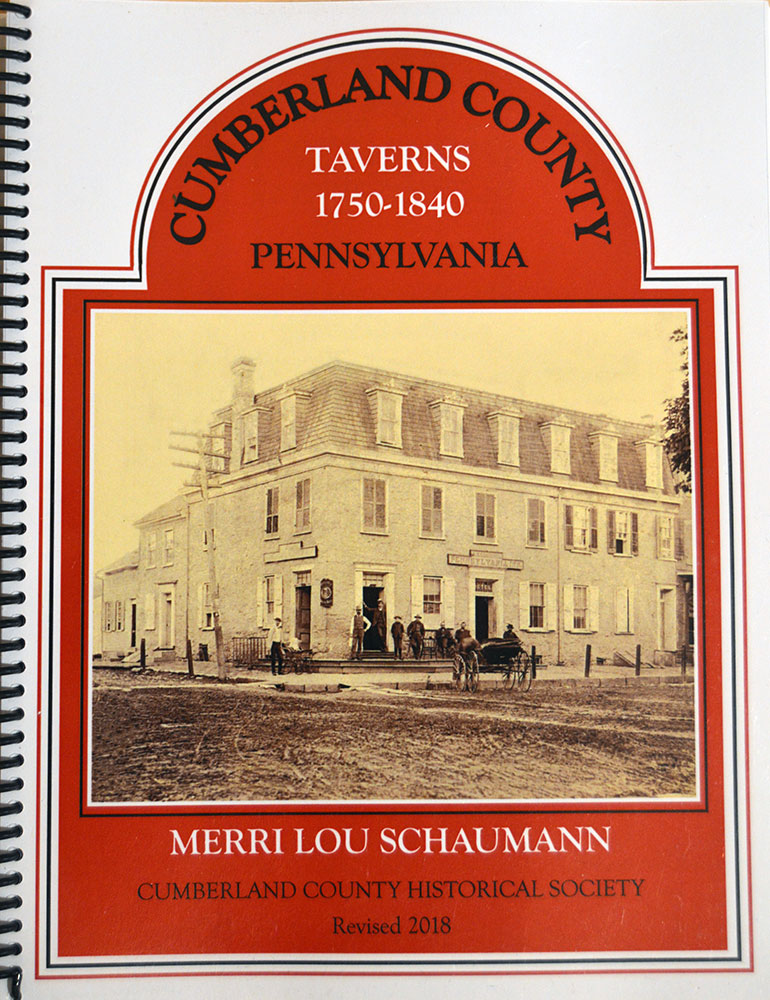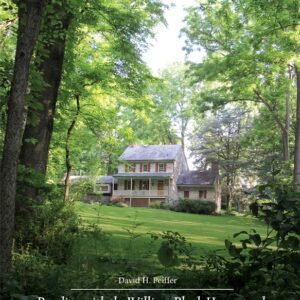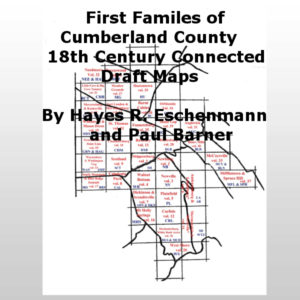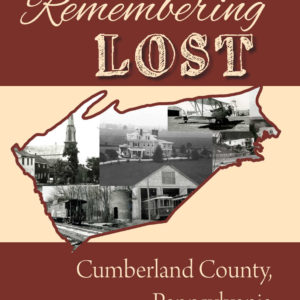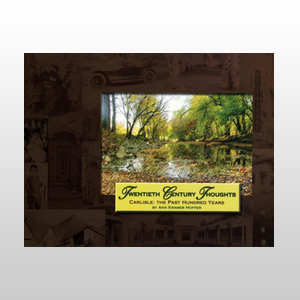Taverns of Cumberland County, Pennsylvania 1750-1840
Price: $28.00
Description
by Merri Lou Scribner Schaumann
8-1/2” x 11” Spiral bound, with 250 Black and White Photographs and Illustrations
Originally published in 1994, Revised 2018
Histories of 200 Cumberland County, Pennsylvania taverns
Tavern life: food, drink, furnishings, patrons, etc.
$28.00 ISBN: 0963892212
Taverns of Cumberland County Index
This book contains the histories of 200 taverns: 89 rural taverns and 111 town taverns. Obviously, they did not all operate simultaneously. A list of licensed tavernkeepers in the 1798 Quarter Session Docket indicates that 61 taverns were in operation in Cumberland County. Twenty-four of those taverns were in Carlisle, 8 in Shippensburg, and 5 in Newville. The remaining 24 taverns were spread over the county and included 8 in East Pennsborough Township, 5 in Allen Township, 5 in Middleton Township, 2 in Dickinson Township, and 1 each in West Pennsborough Township, Newton Township and Southampton Township. The 1820s saw the height of travel by road, and the heyday of the tavern. Consequently, by 1826 there were 87 licensed taverns in Cumberland County.
The majority of taverns stood along main roads. Because the Harrisburg Chambersburg Turnpike (Route 11) was both the longest and the most traveled road in the county, it had the greatest number of taverns. The Walnut Bottom Road had the largest number of taverns in relation to its length, primarily because, unlike the Turnpike, it was toll free. Occasionally a tavern was kept on a smaller road, usually because there was a large mill nearby and its customers generated enough business for a tavern.
The original intent of this book was to identify all the taverns that have existed in Cumberland County since its beginning in 1750. Once research began, however, several things quickly became obvious. First, a book covering every tavern that existed in Cumberland County would have been just too long. Second, after the railroad’s appearance in the late 1830s, traffic was siphoned from the roads—thus forcing the closure of many taverns—and the traditional tavern began to evolve into the modern hotel. Because of these developments, it was decided to make 1840 the cut-off date. It also became evident in the course of research that the tavern was not just a separate entity but a vital part of the life of the community, and its role needed to be explained.
Many owners of old houses mistakenly believe that their houses were once taverns. This is an easy mistake to make. Taverns were licensed houses in which food, drink, and lodging were provided for a fee, and they had no specific structural characteristics that would have defined them as taverns. Although a house may have had a long tradition of having served as a tavern, unless it could be documented by a tavern license, newspaper advertisement, or other contemporary sources, that house has not been included in this book.
Another criterion for a tavern’s inclusion in this book was that it must have operated as a tavern for more than a single year and must have been kept by a licensed tavernkeeper. If a person kept a tavern without paying for a license, he*
*Future masculine pronouns are intended in their traditionally inclusive sense. or she was indicted for keeping a “tippling house” and was fined by the court. These unlicensed taverns were not included because they did not play a significant role in the history of tavernkeeping in Cumberland County.
Many sources were used to identify the locations of taverns, but the starting point was the examination of all Cumberland County tavern license applications from 1750 to 1840: several thousand in number. By examining the applications year after year, one can follow a tavernkeeper for a succession of years and see when he first operated a particular tavern, when he quit, and who kept the tavern after him. Each application gives the name of the town or township in which the tavern was located. If the tavern was in a town, sometimes the name of the street on which the tavern stood is given, along with other identifying information such as the name of the previous tavernkeeper or the name of the tavern. If the tavern was a rural one, the information includes the name of the road that the tavern was on (when available), the name of the tavern, and approximately how many miles the tavern was from Carlisle.
Another primary source used to locate taverns was the Carlisle newspapers; every issue from 1785 to 1840 was examined. Owners of tavern properties wishing to rent or sell would advertise in the newspapers, and these ads usually gave a description of the tavern property that helped not only to locate the tavern, but also to provide a description of the tavern and other buildings on the property.
“Road Papers” also proved invaluable for locating taverns. Every time a road was laid out in the county a petition from local residents, along with a “draught” of the road, was presented to the court. Such a “draught” (draft) shows the course of the proposed road, the landowners whose property joined the road, and notes landmarks along the way. The landmarks include not only trees, creeks, and bridges, but also houses, barns, mills, and taverns. Road drafts showing these taverns are presented in the text with the tavern histories.
Deeds, atlases, wills, and Orphans’ Court records also helped locate taverns. The 1798 Direct Tax, commonly called the “Glass Tax” or “Window Tax,” county tax lists, and newspapers provided the most help in determining physical information about the taverns.
The names of taverns were found in tavern license petitions, newspaper ads, travel journals, and Inquisitions of property held by the county.
The books in the County Heritage series published by the Cumberland County Historical Society, of which this book is the third, are intended to be photo essays as well as histories. Unfortunately, an examination of thousands of photographs in the society’s collection yielded only five photographs of taverns and/or hotels. It was decided, therefore, to photograph all 55 remaining taverns, inside and out, and to try to locate old photographs of these buildings from their present or past owners. In this manner, hundreds of photographs which not only document the exterior of these buildings, but also the architectural details and craftsmanship of the interiors have been added to the collection.
Why did taverns play an important role in American life and culture? What could one expect to find upon entering a tavern? How was it furnished? What kind of food and drink did the tavernkeeper serve? How was it run and by whom? These topics are discussed in Section I.
Section II contains the histories of taverns in Carlisle, Shippensburg, Newville, Mechanicsburg, and the smaller villages.
Section III contains a history of each rural tavern. Because the majority of Cumberland County roads radiated from the county seat, the most logical way to organize the material was to begin in Carlisle and follow each road, mile by mile and tavern by tavern, until the road reached the county line or the river. Each tavern history contains information about the building, a chronological list of its tavernkeepers, and a narrative of incidents that occurred there.
Table of Contents:
Preface ……………………………………………………………………………….. xi
Acknowledgements …………………………………………………………….xiii
Section I: Tavern Life …………………………………………………………… 1
Patrons……………………………………………………………………………………………2
The Tavern Complex ………………………………………………………………………5
Administration ………………………………………………………………………………11
Social and Civic Functions of the Tavern ………………………………………..15
Decline of the Tavern……………………………………………………………………..23
Section II: Histories of Town Taverns ………………………………… 25
Section III: Histories of Rural Taverns ……………………………… 101
Epilogue …………………………………………………………………………… 217
Appendix I: Surviving Taverns………………………………………….. 219
Appendix II: Unlocated Taverns and
Tavernkeepers Not Placed ………………………….. 221
Appendix III: Tavernkeepers’ Inventories/Vendues…………… 227
Endnotes…………………………………………………………………………… 229
Select Bibliography ………………………………………………………….. 239
Index ……………………………………………………………………………….. 241

